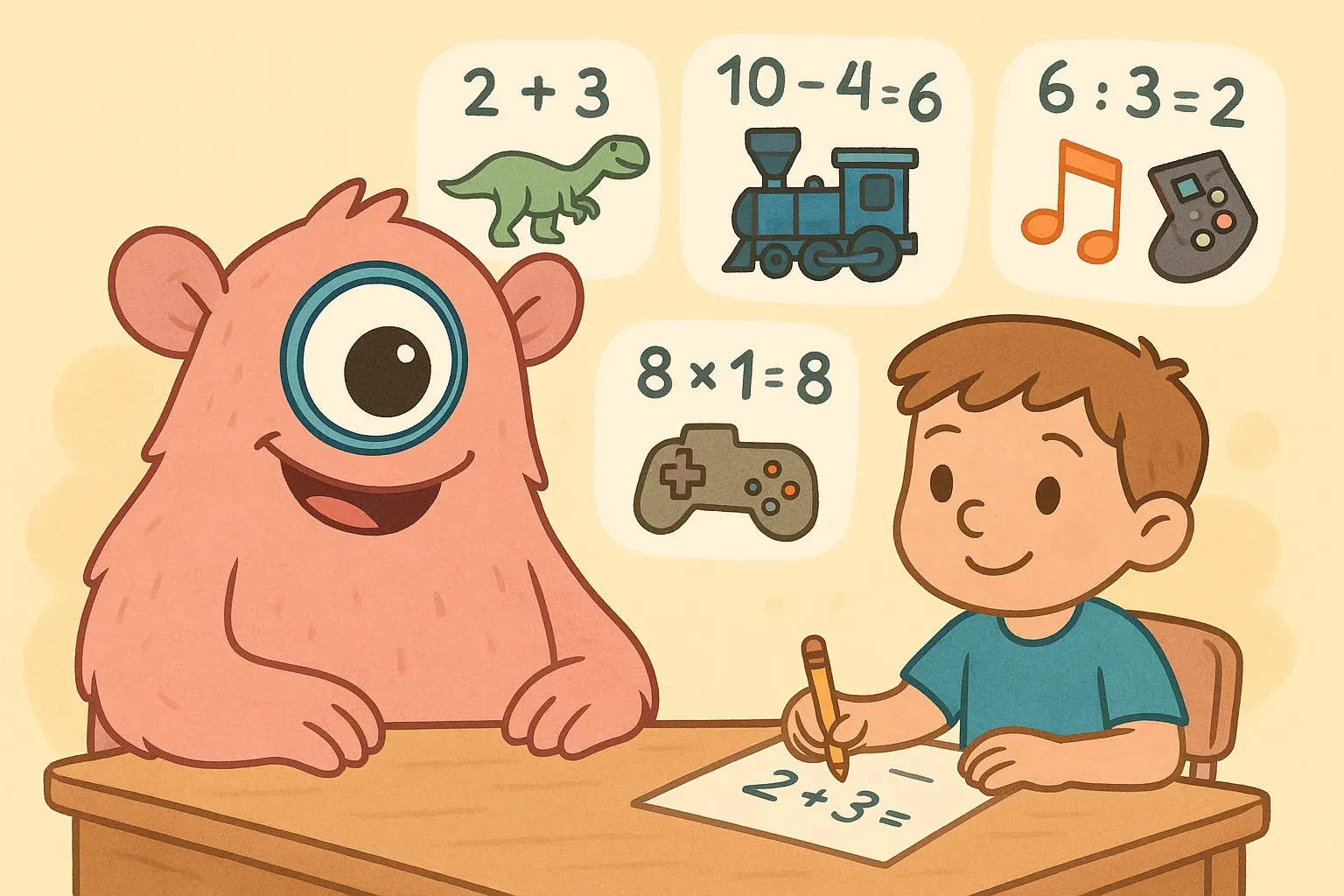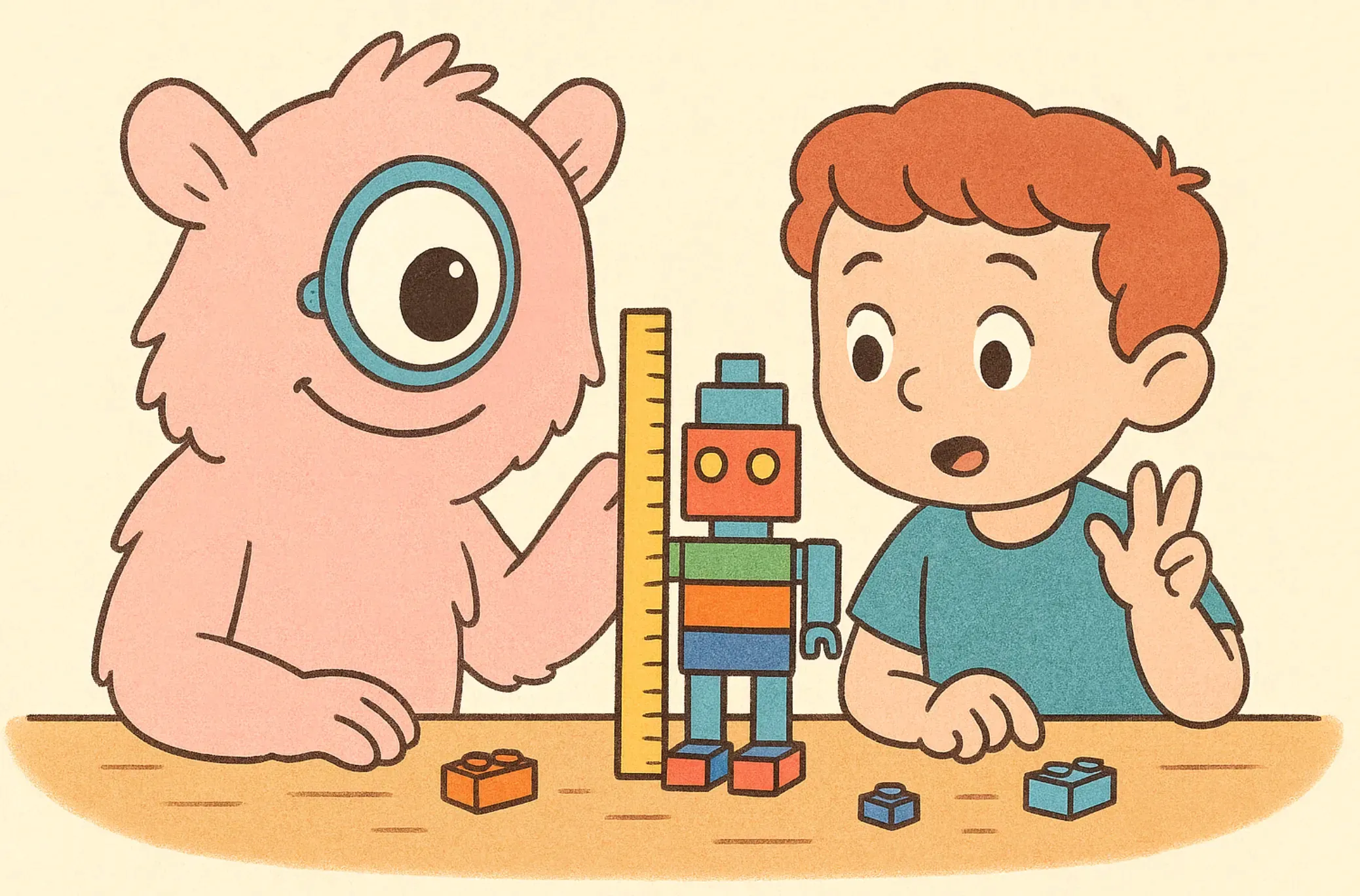5 Ways to Teach Math Through an Autistic Child’s Interests
TL;DR: Research suggests that tapping into an autistic child's special interests can enhance engagement and learning in math. Here are five evidence-based approaches: 1) Customize math problems around their passions; 2) Use visual aids tied to interests; 3) Incorporate hands-on activities with preferred themes; 4) Adapt group discussions to include familiar topics; 5) Leverage technology and games themed on interests. These methods, drawn from peer-reviewed studies, may improve on-task behavior and math skills, though individual results can vary based on the child's needs.
As a parent or teacher of an elementary school child with autism in the US, you know that traditional math lessons might not always capture their attention. Research indicates that many children on the autism spectrum have intense, focused interests - often called special interests - that can be powerful motivators for learning. By weaving these interests into math instruction, you might see improved engagement and understanding, though it's important to tailor approaches to each child's unique profile. This article explores five practical ways to do just that, all supported by peer-reviewed research. Remember, while these strategies show promise, consulting with educators or specialists familiar with your child's needs is key.
Understanding the Power of Special Interests in Math Education
Children with autism often exhibit strong special interests that can drive motivation in educational settings. Studies suggest these interests may help bridge the gap between abstract math concepts and real-world application, potentially leading to better academic outcomes. For instance, when math tasks align with a child's passion, such as video games or animals, engagement tends to increase. This approach aligns with broader educational strategies for neurodiverse learners, and you might find complementary ideas in our blog on creating sensory-friendly math environments.

Way 1: Customize Math Problems Around Special Interests
One approachable method is to redesign standard math problems to feature your child's favorite topics. Research shows that incorporating special interests into assignments can significantly boost on-task behavior during math lessons. For example, if your child loves music, you could create word problems about calculating beats per minute or dividing concert tickets among friends. A study involving high school students with autism found that embedding interests like music into geometry and algebra tasks led to large improvements in focus and completion rates.
In elementary settings, this might look like using a child's interest in trains for addition and subtraction: "If a train has 5 cars and adds 3 more, how many total?" Peer-reviewed findings indicate such personalization may enhance motivation, as children are more likely to persist with tasks that feel relevant. Start small by observing your child's interests during playtime and brainstorming simple adaptations. This strategy not only supports math skills but can foster a positive attitude toward learning.
Way 2: Use Visual Aids Tied to Interests
Visual supports are often recommended for children with autism, and linking them to special interests can make math more accessible. Evidence from a meta-analysis of mathematics interventions highlights that using preferred objects or visuals in counting and problem-solving can lead to high success rates in accuracy and engagement. For instance, if your child is fascinated by dinosaurs, use dinosaur figurines as manipulatives for grouping or patterning exercises.
This method draws on the visual strengths many autistic children possess, as noted in research. In one study, preference assessments helped select high-interest items for math tasks, resulting in perfect engagement scores. Teachers can create custom charts or flashcards featuring the child's interest, such as space-themed number lines for rocket countdowns. Pair this with our guide to visual supports in the classroom for more ideas on implementation.
Way 3: Incorporate Hands-On Activities with Preferred Themes
Hands-on learning can be particularly effective when themed around a child's special interests. A peer-reviewed paper on effective mathematics strategies for young children with autism describes using familiar objects and "best friends" number pairs in games, which improved conceptual understanding. By integrating interests like toys or animals into activities, such as sorting Lego bricks by color and quantity, you can teach classification and basic operations.
Studies suggest this tactile approach helps connect abstract ideas to concrete experiences, potentially aiding retention. For elementary kids, try building structures with blocks to explore measurement - measuring the height of a "robot tower" if robots are their passion. Research indicates that such embedded instruction, when systematic, leads to significant gains in math knowledge compared to standard methods.

Way 4: Adapt Group Discussions to Include Familiar Topics
Group math talks can be adapted to incorporate special interests, making them more inclusive for autistic children. Findings from a study on adapted Number Talks for preschoolers with ASD show that small-group discussions with visual supports and prompting improved number sense skills like counting and magnitude. While the study focused on early learners, the principles apply to elementary school by weaving in interests.
For example, during a class discussion on patterns, reference a child's interest in cars: "How many red cars and blue cars make a repeating pattern?" Peer-reviewed evidence suggests that fading prompts over time helps build independence, and including peers can promote social learning. This method may require some preparation, but it encourages participation in a low-pressure way.
Way 5: Leverage Technology and Games Themed on Interests
Technology offers endless opportunities to blend math with special interests through apps and games. While direct studies on tech are emerging, a review of math education for students with ASD notes the potential of applied behavior analysis techniques in digital formats, which can be customized to interests. Apps like those simulating train schedules for time-telling or animal farm games for addition can engage children deeply.
Research supports using reinforcement and modeling in tech-based interventions, showing improvements in skills like problem-solving. For US parents, look for apps aligned with Common Core standards, and monitor screen time. Explore our blog post on tech tools for autism learning for recommendations.
Teaching math through an autistic child's interests requires observation, creativity, and patience, but the potential rewards in engagement and skill-building are supported by research. Special interests, often intense and focused in children with autism spectrum disorder (ASD), can serve as a gateway to abstract concepts that might otherwise feel overwhelming. Peer-reviewed studies consistently point to increased motivation and on-task behavior when educational content aligns with these passions, though outcomes vary by individual factors like cognitive profile and support level.
In the US, where elementary education emphasizes foundational skills like number sense and operations, adapting lessons to interests can help meet Individualized Education Program (IEP) goals. For parents, collaborating with teachers under the Individuals with Disabilities Education Act (IDEA) ensures these strategies fit within school frameworks. Teachers, meanwhile, can use these approaches to foster inclusive classrooms, potentially reducing behavioral challenges during math time.
Detailed examples from research illustrate practical applications. In one case, a child's fascination with video games was used to teach perimeter by mapping game levels, leading to natural extensions in area and measurement. Another study highlighted music-themed algebra, where calculating rhythms improved focus in adolescents, suggesting scalability for younger learners. Visual strengths, common in ASD, are amplified when aids like charts or manipulatives feature preferred themes, as evidenced by high engagement rates in meta-analyses.
Hands-on activities extend beyond the classroom - parents can replicate them at home with everyday items, reinforcing school learning. Group adaptations, like modified Number Talks, not only build math skills but also social interaction, with prompts ensuring participation. Technology integration, while promising, should be monitored for overstimulation, with apps chosen for their customizability.
Challenges include identifying shifting interests and ensuring generalization to non-interest areas, but starting with small trials can yield insights. Professional development for teachers and parent workshops can enhance implementation. Overall, this interest-based paradigm shifts math from a chore to an extension of joy, creating truly personalised learning and potentially laying stronger foundations for lifelong love of learning.
FAQ
How do I identify my child's special interests?
Observe playtime and daily preferences; research suggests these are often repetitive and intense, like specific toys or topics.
Will this work for all math topics?
Studies show promise for basics like counting and operations, but advanced concepts may need additional supports.
What if my child's interests change?
Flexibility is key; peer-reviewed findings indicate regular reassessment keeps engagement high.
Can teachers use these in inclusive classrooms?
Yes, adaptations like visual aids support all learners, as per inclusive education research.
Are there risks to over-relying on interests?
Balance is important; evidence suggests gradual expansion to new areas prevents fixation.
Where can I find more resources?
Consult ASD organizations or school specialists; our blog also offers related guides.
Citations
- Davey, L. (2020). Using the special interests of autistic children to facilitate meaningful engagement and learning. Link
- Dahlbäck, K. (2022). Using Special Interests to Improve Academic On-Task Behavior in Students with Autism Spectrum Disorder. Link
- King, S. A., et al. (2013). Effective Mathematics Strategies for Young Children with Autism. Link
- King, S. A., et al. (2022). Mathematics Interventions for Individuals with Autism Spectrum Disorder: A Meta-Analysis. Link
- Aydin, O., & Diken, O. (2023). Increasing the Number Sense Understanding of Preschool Students with ASD. Link
- Carr, M. E. (2019). Mathematics education for students with Autism Spectrum Disorder: Where are we now? Link
